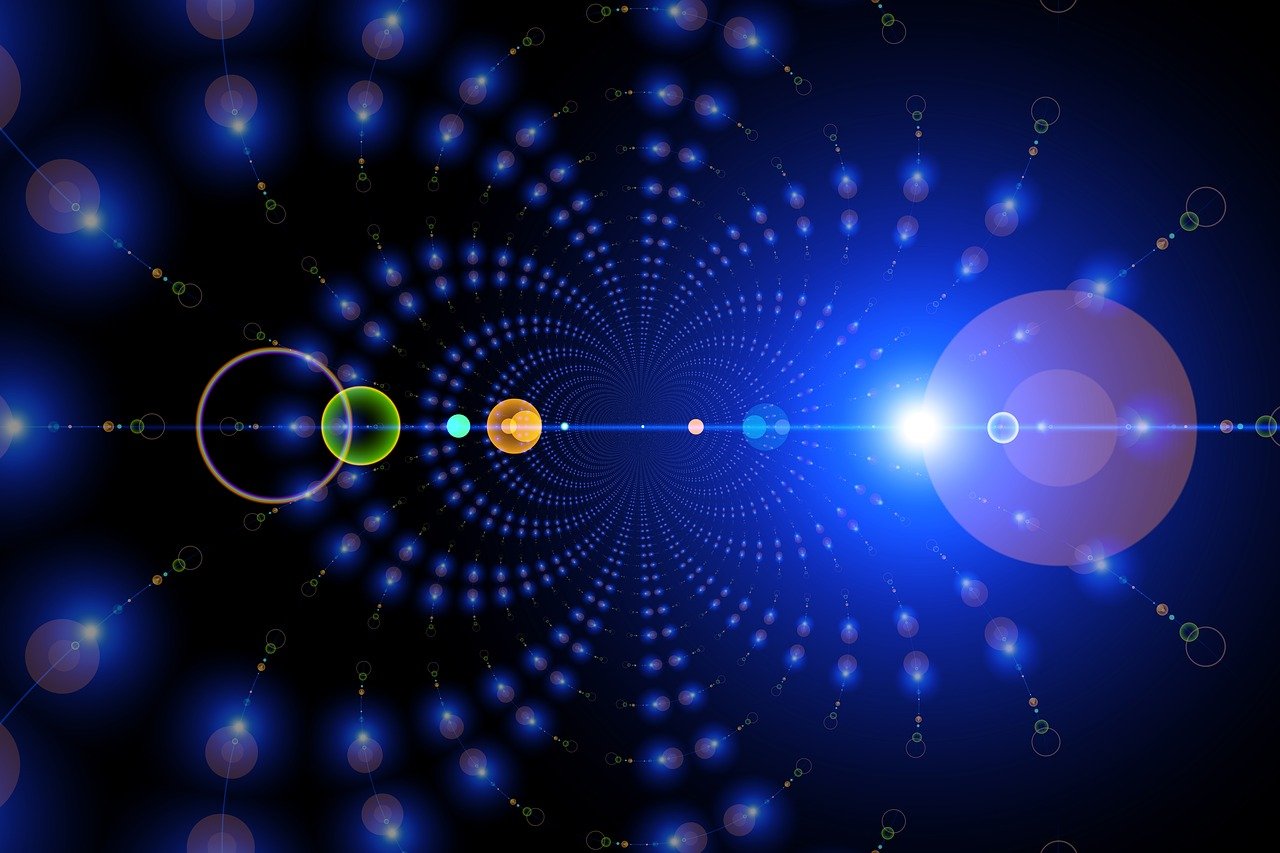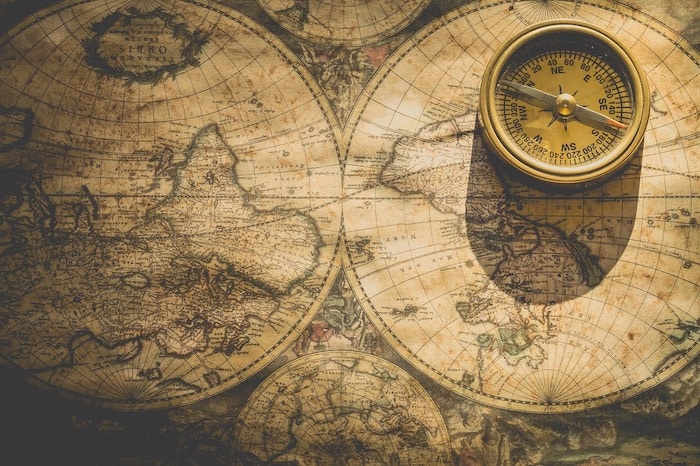When humanity discovered the secret of counting and numbers 40,000 years ago, the course of history changed, and our societies have become immensely dependent on numbers, be it prime numbers that determine our banking systems or imaginary numbers that govern how airlines and airplanes are guided on and off runways.
We all live in separate, compact bubbles, oblivious to how massive numbers that govern everything we share connect us. Today, we’ll burst that bubble and show you the secrets of fathomless digits holding the fabric of reality together. So, get your super calculators ready, and let’s begin.
Key Takeaways
- Many unimaginably colossal numbers show how weird infinity is.
- Today, we will see some of these numbers and explain how their existence breaks reality.
Flash Facts
| First Use of Numbers By Humans | About 40,000 years ago. |
| Oldest Calculator | Abacus (1100 BCE) |
Realistic But Weird
Whenever the overwhelming majority of people list the biggest numbers they know, we hear the words billion, trillion, quadrillion, and in rare cases, quintillion, but these numbers are nothing when it comes to the realm of weirdly large numbers; these realistic but weird numbers are so big that most people will have their mouths wide open on learning about them. So, here they are:
Googol
1. Most of us must have heard of Google, but did you know it was created from the misspelling of the word Googol?
2. A googol is a colossal figure in the expression of 10100. That’s one followed by one hundred zeros. For better clarity, it’s written as 10, 000, 000, 000, 000, 000, 000, 000, 000, 000, 000, 000, 000, 000, 000, 000, 000, 000, 000, 000, 000, 000, 000, 000, 000, 000, 000, 000, 000, 000, 000, 000, 000, 000.
3. The word googol was coined by a 9-year-old named Milton Sirotta in 1920. He was the American mathematician Edward Kasner’s nephew. How cool that he never knew how much his idea would impact the future.

Centillion
4. Many people may think the Centillion is unreal, but it is. It’s bigger than a googol and written in the notation 10303, which is 1, followed by 303 zeros or:
1,000,000, 000, 000, 000, 000, 000, 000, 000, 000, 000, 000, 000, 000, 000, 000, 000, 000, 000, 000, 000, 000, 000, 000, 000, 000, 000, 000, 000, 000, 000, 000, 000, 000, 000, 000, 000, 000, 000, 000, 000, 000, 000, 000, 000, 000, 000, 000, 000, 000, 000, 000, 000, 000, 000, 000, 000, 000, 000, 000, 000, 000, 000, 000, 000, 000, 000, 000, 000, 000, 000, 000, 000, 000, 000, 000, 000, 000, 000, 000, 000, 000, 000, 000, 000, 000, 000, 000, 000, 000, 000, 000, 000, 000, 000, 000, 000, 000, 000, 000, 000.
We won’t write the remaining numbers on the list to save space.
5. The centillion is the largest recognized number ending in -illion. However, we haven’t scratched the surface yet.
Millinillion

At this point, your brain must be going haywire trying to learn all these weird tongue-twisting words.
6. The millinillion is a colossal number that creeps into insane numbering territory.
7. It is written as 103003. That blows both Googol and Centillion out of the water.
Googolplex
Here, mathematicians were high on something, maybe space dust or moon rocks.
8. The googolplex is an advanced number with the notation of 10 to the power of 10 to the power of 100 or 10googol.
9. It is far greater than the millinillion and was coined by Milton Sirotta. For a 9-year-old, that’s super impressive.
10. The official modern naming for a googolplex is ten trillitrestrigintatrecentillitrestrigintatrecentillitrestrigintatrecentillitrestrigintatrecentillitrestrigintatrecentillitrestrigintatrecentillitrestrigintatrecentillitrestrigintatrecentillitrestrigintatrecentillitrestrigintatrecentillitrestrigintatrecentillitrestrigintatrecentillitrestrigintatrecentillitrestrigintatrecentillitrestrigintatrecentillitrestrigintatrecentillitrestrigintatrecentillitrestrigintatrecentillitrestrigintatrecentillitrestrigintatrecentillitrestrigintatrecentillitrestrigintatrecentillitrestrigintatrecentillitrestrigintatrecentillitrestrigintatrecentillitrestrigintatrecentillitrestrigintatrecentillitrestrigintatrecentillitrestrigintatrecentillitrestrigintatrecentillitrestrigintatrecentillitrestrigintatrecentilliduotrigintatrecentillion.
Don’t try saying that, but we’d love to hear you go for it if you can.
Numbers Too Large To Imagine
You must be tired from cranking your brain hard to gobble up these figures. How about we take a 3-second break before we dive into the next set of numbers, as it’s about to get even weirder?

Skewes’s Number
11. Skewes’s Number was created by South African mathematician Stanley Skewes, to try to solve a problem of the smallest number x in the formula π(x) > li(x). For this notation, π represents the prime-counting function, which counts the number of prime digits less than or equal to the real number, x.
12. Now, Skewes’s Number represented the highest limit the formula could create, and it was so immense that nothing could technically represent it for anyone to see. It’s written as 10 to the power of 10 to the power of 10 to the power of 34.
13. For a long time, Skewes’s Number was the largest in mathematics until some mathematicians smoked more space rocks and came up with something crazier.
Rayo’s Number
14. Rayo’s number, for a while, took the crown from Skewes’s Number as the largest ever thought of by mathematicians.
15. It is defined as the smallest number greater than any finite number named by an expression in any language of first set theory that uses only googol symbols or fewer. Most people write it out as F(10100).
Graham’s Number
You must have heard of Graham’s Number if you have little interest in unthinkably massive numbers.
16. Graham’s Number is a figure that represents the upper limit on the answer to a problem in Ramsey’s Theory, a special field in mathematics.
17. It is represented using Knuth’s up-arrow notation. To write it out, we’ll need to learn the notation for the number G1, which is:
3↑↑↑↑3=3↑↑↑3↑↑↑3=3↑↑↑(3↑↑(7,625,597,484,987))
Note that 3↑3= 33=27, meaning each arrow represents an increase in order.
Now, we have to get G2, which is:
3↑↑…↑↑3, where … represents G1. Why are we doing all this? Well, to show you how unthinkably large Graham’s number is.
18. To get it, you’ll repeat the above step 63 times from G1, to G2 to G64. Wild, right?
19. Graham’s number is so large that the universe would have no space to contain the digits if written out.
20. If you even tried computing it in your mind, you’d overload your brain so terribly that it would shrink into a full-blown black hole.
21. Also, though it is unprintable, mathematicians perfectly calculated the last thirteen digits of Graham’s number, which are 7262464195387.
Mathematicians need to stop creating lethal information weapons.
TREE(3)

After learning about Graham’s Number, you must have thought you were safe, but no one is safe when mathematicians exist. We need to start keeping them sealed in a separate universe, don’t you agree?
With enough time, they created a new-digit villain, TREE(3).
22. TREE(3) was created from Kruskal’s tree theorem, which states that the set of finite trees over a well-quasi-ordered set of labels is itself well-quasi-ordered under homeomorphic embedding. If that flew over your head, it flew over ours, so don’t worry. We are in this together.
23. What makes TREE(3) so weird is that the first two notations of the sequence TREE (1) and TREE (2) are tiny, with figures 1 and 2 as answers.
Gigantic Numbers That Put Our Lives Into Perspective
If you survived, you can climb the tallest mountain on this planet and sigh, knowing you conquered one of life’s hurdles.
Our universe contains marvels we can’t comprehend. So, the best we can do is to try and define incomprehensible phenomena with numbers.
Cell Count

A cell is the smallest functional and structural unit of a living organism. It’s responsible for the processes that give and maintain life. However, how many do organisms need to function since it’s so tiny?
24. The cell count for an average human is 36 trillion for men, 28 trillion for women, and 17 trillion for children. Putting this into perspective, you can realize how massive large numbers are.
25. As for the total number of cells on Earth, the figure is about 1030 cells. 1030 cells summarize everything called life on Earth? That’s underwhelming compared to numbers like centillion and millinillion, right?
Atom Count
Atoms are the smallest particles of a chemical element that can exist. They are so tiny that classical physics becomes magic once you reach their level.
26. The average human body contains about 7 × 1027 atoms. Now, we are getting somewhere.
27. As for the Earth, it contains about 1.33 × 1050 atoms. That’s large, but sadly, it doesn’t reach a googol. What about the universe?
28. The observable universe contains about 1082 atoms. Wow, all that, and we never actually reached a Googol; this shows you how immensely immeasurable numbers like Googol and Googolplex are.

Other Numbers
Sadly, some numbers didn’t make it into today’s article. So, we’ll give special recognition.
29. Though TREE(3) is unimaginable, there is a number even bigger called SSCG(3). To learn more click here.
30. The Eddington Number, denoted by Nedd, quantifies the total number of protons in the observable universe to about 1.575 x 10 79.
Conclusion
Numbers are weird, and this article has shown how crazy and unimaginably vast they are. If you enjoyed reading this article, leaving us a comment and sharing will go a long way to help. You can check our other articles, like 10 Awesome Sun Facts, and search our Facts Database.






Nice👌👍
Thanks, we hope you enjoyed reading.